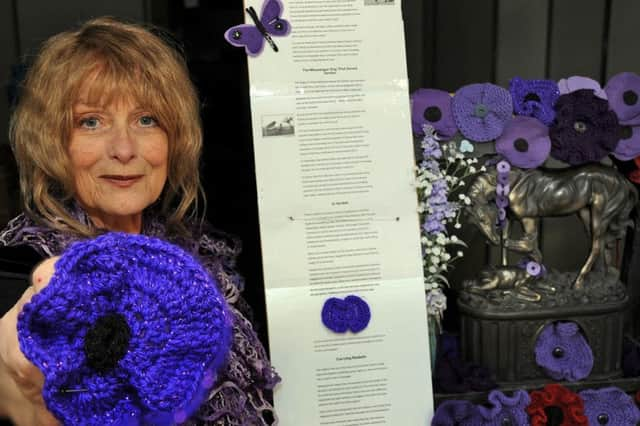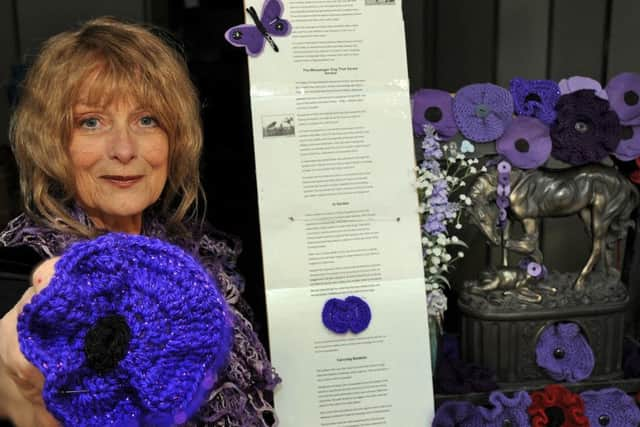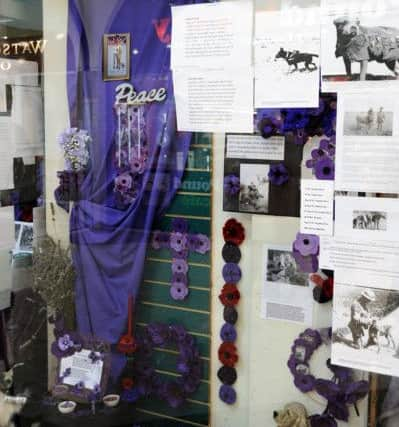Chesterfield purple poppy display honours millions of animals killed in First World War


The wonderful tribute has been on show in the town’s Pavements Shopping Centre ahead of Armistice Day and the centenary of the end of the First World War on Sunday.
June Lane, of Holme Road, Stonegravels, is the lady behind the impressive display, made up of knitted and crocheted purple poppies.
Advertisement
Hide AdAdvertisement
Hide AdThe 68-year-old said: “Millions of animals played such a vital role during the war and millions sadly died.


“All my life I’ve wanted to honour them.
“This tribute is in memory of them – we should definitely remember them.
“The people of Chesterfield who knitted these poppies have done an amazing job and I’d like to thank them.
“Hundreds of people have been to have a look at the display – it’s attracted a lot of interest – and I want to thank everyone for their kind comments.


“I feel incredibly humbled.”
Advertisement
Hide AdAdvertisement
Hide AdPurple poppies commemorate the animals which were injured and died in conflict.
According to the Animals in War Memorial Fund, eight million horses and countless mules and donkeys died in the First World War.
They were used to transport ammunition and supplies to the front line and many died from the horrors of shellfire as well as the terrible weather and appalling conditions.
Dogs helped to detect mines and dig out bomb victims.
Many battled on despite horrific wounds and in terrifying circumstances to the limit of their endurance, showing indomitable courage and supreme loyalty to their handlers.
Advertisement
Hide AdAdvertisement
Hide AdMeanwhile, 100,000 pigeons were used to carry important messages.
Many other animals – including cats, elephants, camels, canaries, even glow worms – all contributed their strength, energy and lives during the First World War.
June added: “A lot of people have told me they didn’t realise what the animals did and what they suffered along with our brave servicemen and women. I wanted to make people aware of what happened to them. They shouldn’t be forgotten.”